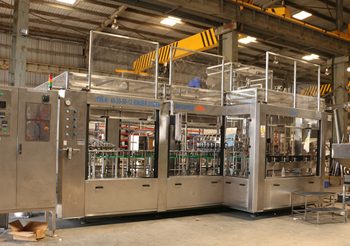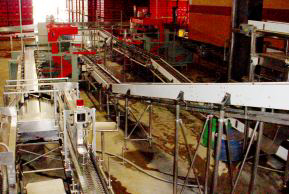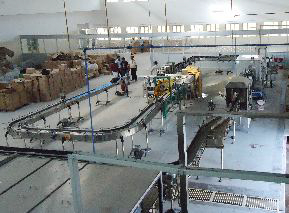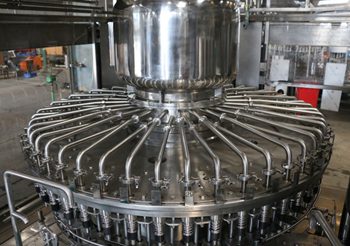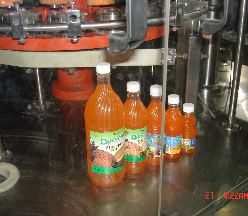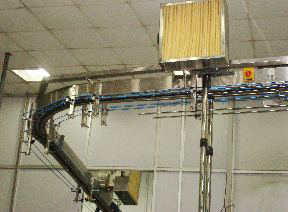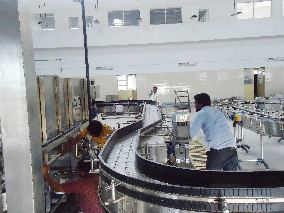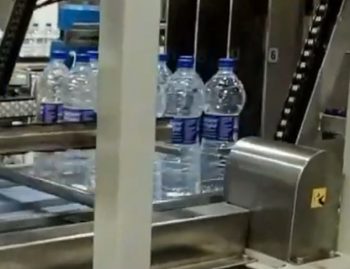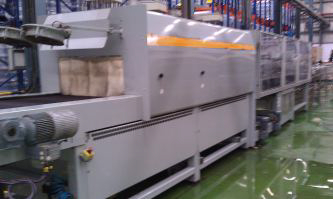If you’ve ever wondered how those perfectly filled and sealed capsules end up in your medicine cabinet, then you’re in for a treat. In this blog post, we’ll delve into the fascinating working principle behind capsule filling machines and unravel the secrets behind their efficient operation.
Whether you’re a pharmaceutical manufacturer looking to streamline production or simply curious about the inner workings of these powerful machines, understanding their principles will no doubt ignite your interest. So, let’s embark on this captivating journey that uncovers everything there is to know about capsule filling machines – from their types and components to maintenance tips and future advancements. Get ready for an enlightening adventure!
Types of capsule filling machines
Types of capsule filling machines
There are several types of capsule filling machines available in the market today, each designed to meet specific needs and requirements. Let’s take a closer look at some of the most common types:
1. Manual Capsule Filling Machine: This type requires manual operation, where capsules are filled one by one using a hand-held device. It is suitable for small-scale production or when handling different capsule sizes.
2. Semi-automatic Capsule Filling Machine: This machine automates certain aspects of the process, such as separating empty capsules and filling them with product. However, other steps like closing and polishing may still require manual intervention.
3. Automatic Capsule Filling Machine: Considered the most advanced option, this machine can handle large-scale production efficiently and effectively. It automates all stages of the process from separating capsules to filling, closing, and ejecting them.
4. Softgel Encapsulation Machine: Unlike conventional hard shell capsules, softgel encapsulation machines produce soft gelatin capsules that contain liquid or semi-solid ingredients.
5. High-speed Capsule Filling Machines: These machines are designed specifically for high-volume production lines where speed is crucial to meet demand.
When choosing a capsule filling machine for your business, consider factors such as production volume, required automation level, flexibility in handling different capsule sizes/types/formulations,
Investing in a suitable capsule filling machine can bring numerous benefits to pharmaceutical manufacturers and supplement producers alike.
Components and working principle of a capsule filling machine
Components and Working Principle of a Capsule Filling Machine
A capsule filling machine is a vital piece of equipment used in the pharmaceutical industry for efficiently filling empty capsules with medication or supplements. Understanding its components and working principle can provide valuable insights into how this process works.
The main components of a capsule filling machine include the hopper, sorting device, dosing disc, tamping pin plate, and closing station. The hopper holds the empty capsules while the sorting device ensures that they are correctly oriented. The dosing disc accurately measures and dispenses the desired amount of fill material into each capsule. The tamping pin plate then compresses the fill material to ensure uniformity. At the closing station, both halves of the capsule are securely joined together.
Now let’s delve into how these components work together to create filled capsules. As an operator loads empty capsules into the hopper, they are fed through a series of channels where any misaligned or damaged ones are rejected by sensors in the sorting device.
Next, as each empty capsule reaches the dosing disc rotation point, it is filled precisely with metered amounts of powder or pellets using various mechanisms like vacuum suction or piston sliding action.
Once filled with appropriate doses, individual caps (tops) move forward on their respective tracks while bodies move backward until they meet at precise locations on top-loading carriers within tamping pins plates where compression occurs ensuring even distribution and consistency throughout all capsules being produced simultaneously!
Finally comes closure; after reaching designated positions atop carrier platforms under controlled pressure applied by pneumatic cylinders pressing down gently against uppermost parts forming tight seals thereby completing formation processes resulting from raw materials becoming end products ready packing shipping out customers worldwide!
In conclusion,! understanding how a capsule filling machine operates provides crucial knowledge about its efficient functioning in manufacturing processes within pharmaceutical industries.! By grasping these underlying principles,! one can appreciate! why such machines play an essential role! in delivering! accurate dosages and ensuring product quality.
Step-by-step process of capsule filling
The step-by-step process of capsule filling involves several stages to ensure accurate and efficient production. Let’s explore each step in detail.
1. Preparing the Capsules: The first step is to prepare the empty capsules by separating the caps from the bodies using a capsule sorting machine. This ensures that all capsules are oriented correctly for filling.
2. Filling Station Setup: Once the capsules are ready, they are loaded into the feeding system of the capsule filling machine. The machine is then set up with specifications such as fill weight, speed, and other parameters according to product requirements.
3. Powder Dispensing: The next stage involves dispensing precise amounts of powder or granules into each capsule body. This can be done either manually or automatically through a dosator or tamping pin mechanism.
4. Tamping and Compression: After powder dispensing, a tamping pin compresses the filled powder inside each capsule body to achieve uniformity and eliminate any air pockets.
5. Cap Placement: In this step, filled capsule bodies move towards another section where their caps are placed on top using a mechanical system or vacuum technology.
6. Cleaning and Polishing: Once caps are placed, excess powder around the edges is removed using vacuum suction systems or brushes. Furthermore, some machines incorporate polishing stations to give finished capsules a smooth appearance.
7. Ejection and Collection: Fully assembled capsules undergo quality checks before being ejected from the machine onto an output conveyor belt for collection in containers or packaging materials.
Each stage of this process requires precision engineering and careful monitoring to ensure consistent results throughout production runs.
Factors to consider when choosing a capsule filling machine
Factors to Consider When Choosing a Capsule Filling Machine
When it comes to selecting a capsule filling machine, there are several important factors that need to be considered. Each factor plays a crucial role in determining the efficiency and effectiveness of the machine. Let’s take a closer look at some key considerations:
1. Production Capacity: First and foremost, you need to assess your production requirements. Consider the number of capsules you will need to fill per hour or day. This will help you determine whether you require a high-speed automatic machine or a smaller semi-automatic one.
2. Size Range: Another vital factor is the size range of capsules that can be filled by the machine. Different machines have varying capabilities in terms of filling different capsule sizes such as 00, 0, 1, etc.
3. Accuracy and Consistency: It is essential to ensure that the chosen machine provides accurate and consistent dosing for each capsule filled. Look for features like adjustable dosing systems and precision technology for optimal results.
4. Ease of Use: A user-friendly interface and intuitive controls can greatly enhance productivity and minimize operator errors during operation.
5. Maintenance Requirements: Consider the maintenance needs of the machine as well as availability of spare parts in case repairs are necessary.
6.Cost-effectiveness:
Evaluate both upfront costs as well as long-term operational expenses including power consumption, labor requirements, and consumables like gelatin capsules.
7.Safety Features:
Check if safety mechanisms such as automatic stop functions or sensors are included in order to prevent accidents or damage during operation.
By carefully considering these factors when choosing a capsule filling machine ,you can ensure that you select one which best meets your specific needs while providing efficient performance!
Advantages and disadvantages of using a capsule filling machine
When it comes to pharmaceutical manufacturing, efficiency is key. That’s where the capsule filling machine comes in. Let’s explore some advantages and disadvantages of using this innovative piece of equipment.
One major advantage is speed. Capsule filling machines can fill hundreds or even thousands of capsules per hour, significantly reducing production time compared to manual methods. This means higher productivity and quicker turnaround for manufacturers.
Another advantage is accuracy. These machines are designed to precisely fill each capsule with the required dosage, ensuring consistent quality and efficacy of the final product. This eliminates human error and reduces wastage, saving both time and money.
Capsule filling machines also offer versatility. They can accommodate different sizes of capsules, allowing manufacturers to produce a wide range of medications or supplements with ease. This flexibility gives businesses the opportunity to cater to various market demands without investing in multiple machines.
However, like any technology, there are also some drawbacks associated with capsule filling machines. One potential disadvantage is the initial cost. These machines can be quite expensive to purchase upfront, especially for small-scale operations or startups on a limited budget.
Maintenance and upkeep are also something that needs consideration when using a capsule filling machine. Regular cleaning and maintenance are necessary to ensure optimal performance and prevent breakdowns that could disrupt production schedules.
Furthermore, operator training may be required as these machines often feature complex controls and mechanisms that need proper understanding for efficient operation.
In conclusion (although not concluding!), while there are clear advantages such as increased speed, accuracy, versatility; one must weigh them against potential drawbacks like high initial costs or maintenance requirements when deciding whether investing in a capsule filling machine is right for their specific business needs
Maintenance and safety tips for operating a capsule filling machine
Maintenance and safety are crucial aspects to consider when operating a capsule filling machine. By following proper maintenance procedures and adhering to safety guidelines, you can ensure the smooth functioning of the machine and minimize the risk of accidents or errors.
Regular cleaning is essential to keep the machine in good working condition. Clean all parts thoroughly after each use, removing any residual powder or debris that may have accumulated during the filling process. Pay special attention to areas where powder tends to accumulate, such as around the dosing disc or in the hopper.
Inspect all components regularly for signs of wear or damage. Replace any worn-out parts promptly to prevent them from affecting the performance of the machine. Lubricate movable parts according to manufacturer recommendations to maintain smooth operation.
Ensure that operators are trained on how to safely operate and handle the capsule filling machine. This includes wearing appropriate personal protective equipment (PPE) such as gloves and goggles, especially when handling powders or cleaning equipment.
It is essential always to follow proper operating procedures outlined by the manufacturer’s instructions manual. This includes correctly setting up dosage levels, adjusting speed controls, and ensuring capsules are properly aligned before starting production.
Additionally, it is crucial not to overload or overfill capsules beyond their recommended capacity limits as this could lead to issues with accuracy and quality control.
By implementing regular maintenance routines, providing proper training for operators, and strictly adhering to safety guidelines while operating a capsule filling machine can help extend its lifespan while ensuring safe production processes.
Future advancements in capsule filling technology
As the pharmaceutical industry continues to evolve, so does the technology used in capsule filling machines. Manufacturers are constantly striving to improve efficiency, accuracy, and overall performance. Here are some exciting future advancements that we can expect in capsule filling technology:
1. Automation: With the introduction of artificial intelligence and robotics, we can anticipate fully automated capsule filling machines that require minimal human intervention. These advanced machines will be capable of handling larger volumes of capsules at a faster rate while maintaining precision.
2. Smart sensors: Future capsule filling machines may incorporate smart sensor technology to detect any abnormalities or deviations during the filling process. This will ensure higher quality control by automatically detecting issues such as empty or partially filled capsules.
3. Improved adaptability: Capsule fillers may become more adaptable to different types and sizes of capsules, allowing for greater flexibility in production processes. This means that one machine could potentially handle various formulations without requiring significant adjustments.
4. Enhanced data analytics: Advanced software systems integrated into these machines will provide real-time monitoring and analysis of data collected during the manufacturing process. This information can be utilized for predictive maintenance, optimizing performance, and ensuring consistent product quality.
5. Eco-friendly design: As sustainability becomes increasingly important across industries, future advancements in capsule filling technology may focus on reducing waste generation and energy consumption during production.
